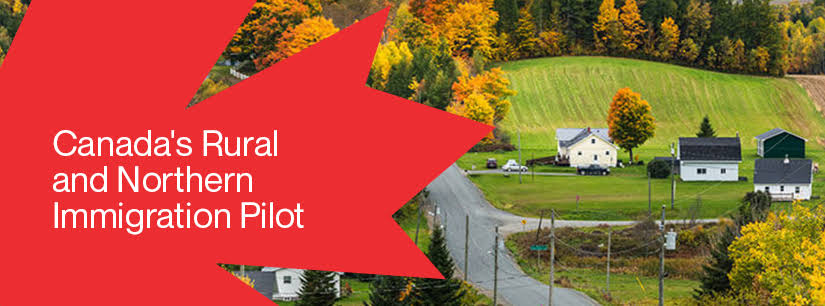In July 2025, Canada launched an improved Rural Immigration Pilot Program to help small communities facing population loss, older workers, and job shortages. This program builds on earlier pilots like the Rural and Northern Immigration Pilot (RNIP) and offers more flexible, community-based plans to better match immigration with the needs of rural Canada.
As urban centers like Toronto, Vancouver, and Montreal continue to attract the majority of newcomers, many rural towns face challenges maintaining essential services, businesses, and infrastructure due to population stagnation. The new rural immigration strategy seeks to correct this imbalance by channeling skilled immigrants into regions that would benefit most from new talent, investment, and diversity.
Objectives of the New Rural Immigration Pilot Program
The core objective of the 2025 Rural Immigration Pilot Program is to support long-term economic growth in smaller communities by attracting and retaining immigrants with the skills, education, and intent to settle permanently. Unlike earlier versions, the new program places more control in the hands of participating communities, allowing them to identify their most pressing labour needs and customize eligibility criteria accordingly.
Another key objective is to foster sustainable population growth. Many rural communities in provinces such as Saskatchewan, Manitoba, and New Brunswick are experiencing aging populations and a shrinking youth demographic. The pilot aims to bring in younger families who can contribute to the workforce, enroll their children in local schools, and invest in community life, ensuring the long-term vitality of these areas.
How the Program Works
The 2025 version of the Rural Immigration Pilot is structured around greater community engagement and coordination with regional economic development agencies. Eligible communities are selected based on criteria such as population size (usually under 75,000), distance from large urban centers, and documented labour market shortages.
Once approved, these communities receive a set quota of immigration nominations per year. Local employers can then offer jobs to eligible foreign workers, who in turn receive community endorsements that significantly strengthen their application for permanent residence. This endorsement system is unique in that it reflects the community’s confidence in the applicant’s potential to integrate and contribute.
Additionally, the application process has been streamlined. With the help of new online tools and federal funding for administrative support, participating towns can efficiently coordinate recruitment, settlement planning, and long-term integration without overwhelming local resources.
Targeted Occupations and Skill Sets
One of the most distinctive features of the new rural pilot program is its adaptability to local labour markets. While each community sets its own employment priorities, there are common trends in the sectors being targeted. Healthcare remains a top priority, with demand for nurses, personal support workers, and medical technicians continuing to rise in remote regions.
Other high-demand occupations include truck drivers, farm workers, heavy equipment operators, chefs, early childhood educators, and skilled tradespeople such as electricians and carpenters. The program also encourages the recruitment of entrepreneurs and small business owners willing to invest in rural economies, especially in sectors like tourism, retail, and manufacturing.
By aligning immigration with real-time labour market data, the program ensures that incoming workers fill genuine gaps, helping local economies expand without displacing domestic workers.
Settlement Support and Integration Services
A major improvement in the 2025 pilot is the expanded emphasis on settlement and integration. Participating communities are now required to develop detailed support plans that cover language training, housing assistance, employment services for spouses, and cultural orientation programs.
Many communities have partnered with local colleges, immigrant-serving agencies, and volunteer groups to create a welcoming atmosphere. Initiatives such as mentorship programs, community ambassador schemes, and multicultural events are designed to help newcomers establish roots and feel included. This focus on integration is critical for retention, as rural areas often lack the large immigrant networks present in bigger cities.
Moreover, the program encourages proactive measures to address housing shortages, with federal grants made available for municipalities to expand affordable housing options for newcomers and their families.
Benefits to Rural Communities
The benefits of the Rural Immigration Pilot Program extend well beyond economic growth. For many small towns, the arrival of new residents helps sustain local schools, prevent hospital closures, and preserve public services that depend on minimum population thresholds.
Immigrant families also bring cultural diversity, revitalizing towns with new cuisines, traditions, and worldviews. This diversity enriches the social fabric and fosters greater tolerance, openness, and resilience in rural communities that may have previously experienced cultural isolation.
In economic terms, immigrants contribute not only as workers but as consumers, renters, and in many cases, business owners. By filling vacant storefronts and creating jobs, immigrant entrepreneurs inject new energy into regions that might otherwise face economic stagnation.
Challenges and Considerations
Despite its promise, the new pilot program is not without its challenges. One key concern is retention—ensuring that immigrants who settle in rural communities stay long-term. Factors such as limited public transit, social isolation, and lack of services for youth and seniors can make it difficult for newcomers to envision a permanent future in small towns.
To counteract this, the federal government has proposed incentive packages, including tax benefits, access to micro-loans for small businesses, and priority access to permanent residency for those who commit to long-term rural residence. These measures are designed to tip the scales in favor of permanence over transition.
There is also a need for public education to address any local resistance to immigration. Community dialogues and outreach programs have been initiated to build understanding, counter misinformation, and highlight the shared benefits of rural immigration.
Future Outlook and Expansion
The 2025 rural pilot is considered a foundational model for how Canada may handle decentralized immigration in the future. Its success could lead to a permanent rural immigration stream within Canada’s broader immigration strategy, offering a more balanced national population distribution.
Discussions are already underway to expand the program to more Indigenous communities, northern territories, and underpopulated areas in British Columbia and Quebec. With rural sustainability becoming a national priority, immigration will play an increasingly central role in shaping Canada’s demographic and economic landscape.
Final Thoughts
Canada’s new Rural Immigration Pilot Program, introduced in 2025, is a timely and innovative solution to the growing disparities between urban growth and rural decline. By matching skilled immigrants with communities in need, offering strong integration support, and empowering local leadership, the program offers a roadmap for inclusive and sustainable development.
As the country continues to rely on immigration to fuel its future, rural areas—once on the margins of immigration policy—are now becoming central to Canada’s national renewal. With careful implementation and continued community support, the program holds the potential to transform both the lives of newcomers and the futures of rural towns across the nation.



